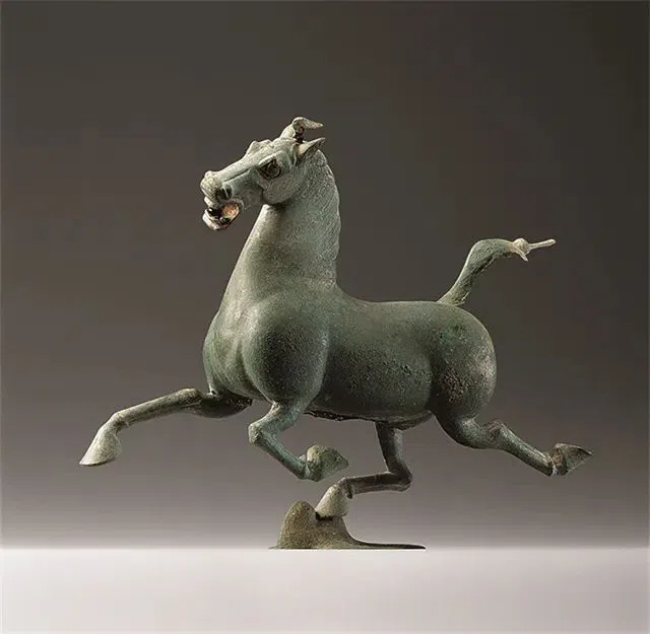Galloping horse treading on a flying swallow: A legend of the Hexi Corridor

An image of the galloping bronze horse. [Photo provided to gogansu.com]
This leaping bronze horse transcends its status as a mere artwork, embodying the strength and resilience of modern China. With all four hooves suspended mid-air and its rear hoof stepping on a flying bird, the sculpture exudes vitality and power. Unearthed in 1978 from an Eastern Han(25-220) tomb, it is believed to represent the legendary "heavenly horse" which Emperor Wu of Han acquired from the Ferghana region. Presently, the horse stands proudly in the Gansu Provincial Museum.
The Han dynasty's "military-agriculture colonization" policy spurred agricultural prosperity in the Hexi Corridor, where the arid and saline environment helped preserve numerous wooden burial objects. Farming tools and livestock models, for examples, could offer insight into oasis-based agricultural life of that time. Wuwei, once a political hub, now houses a massive bronze cauldron in its museum. Standing 118 cm tall and weighing 230 kg, it is believed to have been used by the Xiongnu for cooking meat. Even today, this region remains famous for its beef and lamb.
-
As AI encounters Dunhuang's art, the ancient caisson ceiling bridges centuries to the present.
View all stories

 Gansu thrives from green development
Gansu thrives from green development  >
>